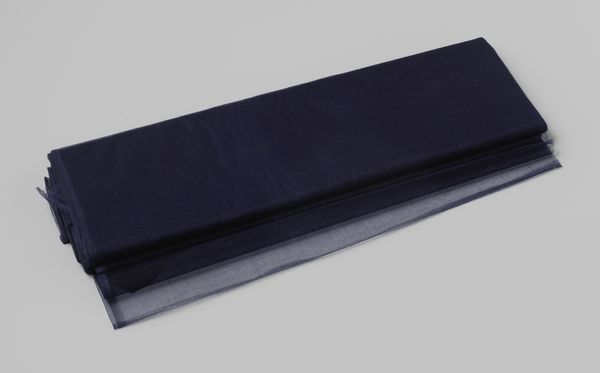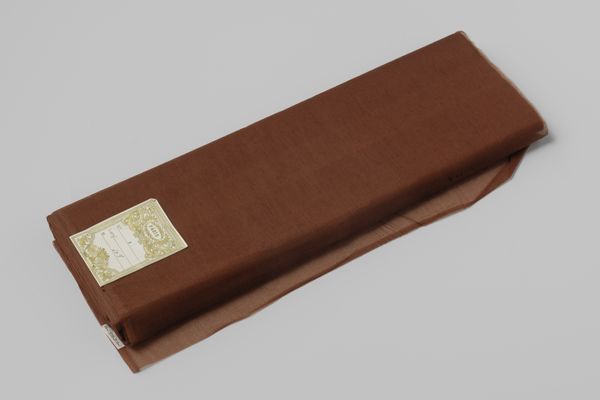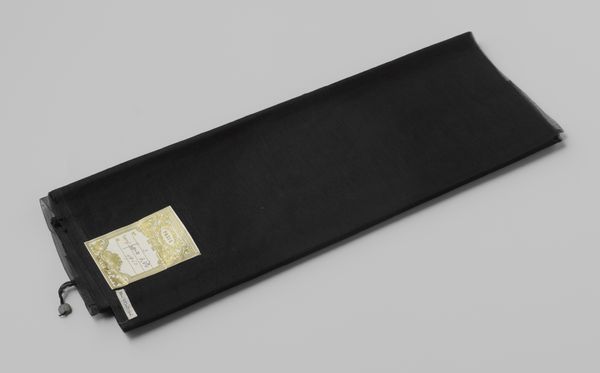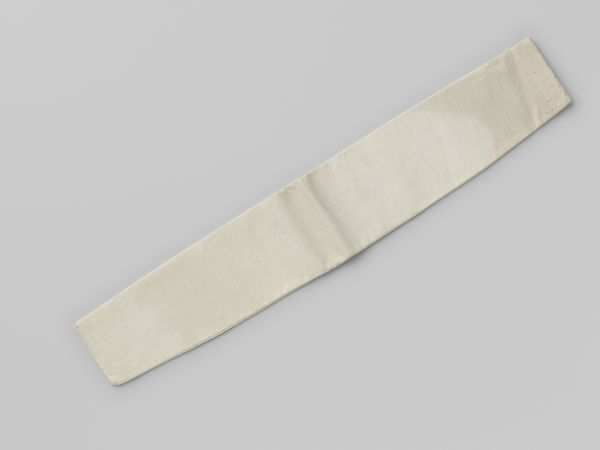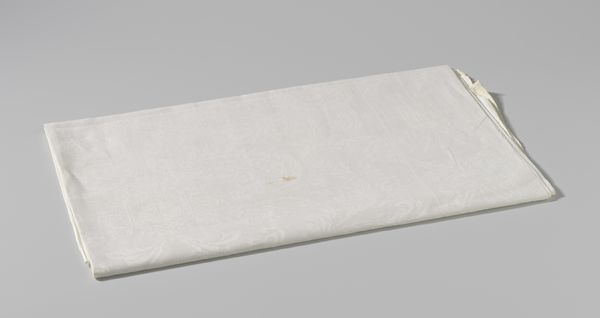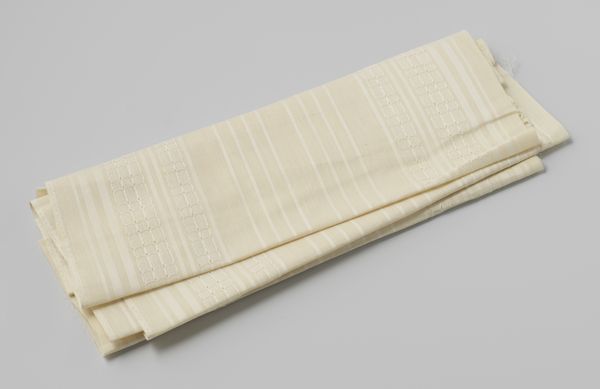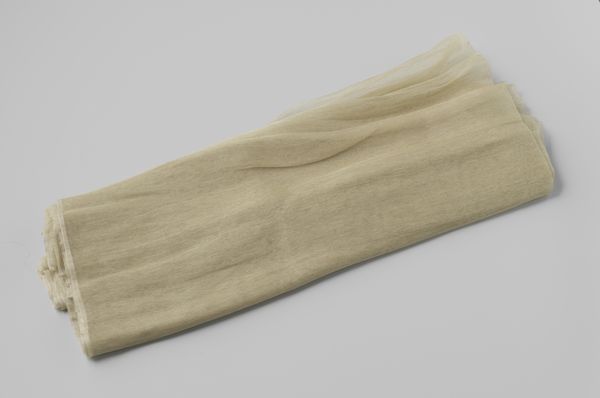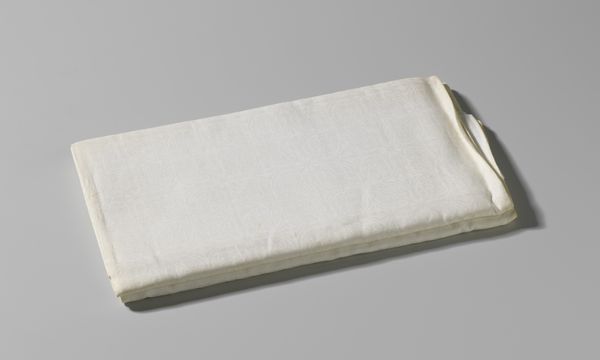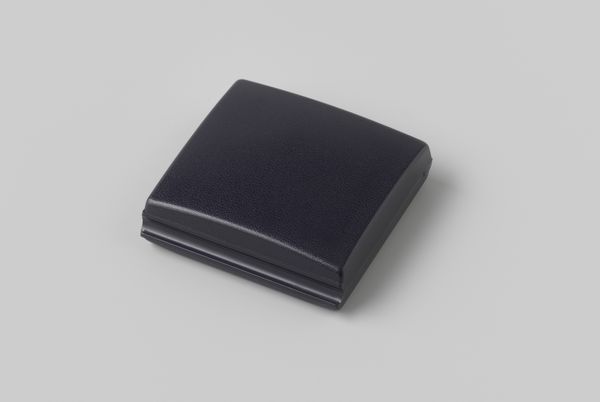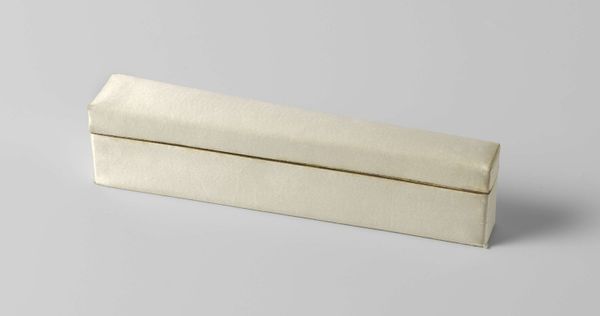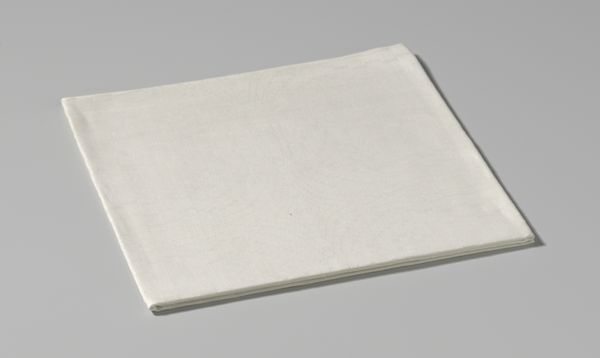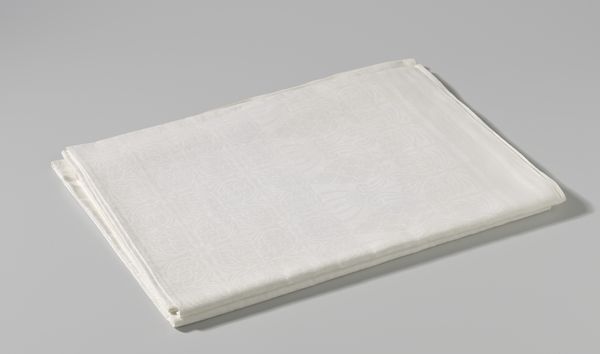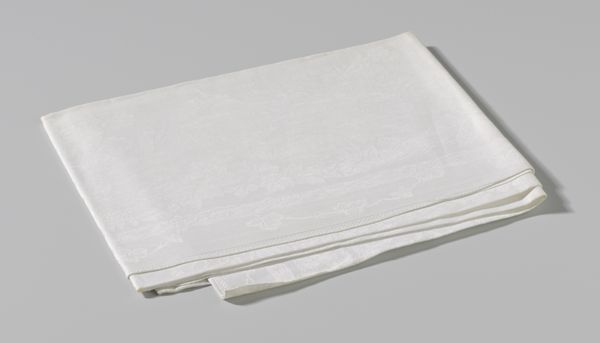
textile, photography
#
still-life-photography
#
textile
#
photography
Dimensions: width 45 cm, length 15 cm, height 4.5 cm
Copyright: Rijks Museum: Open Domain
Curator: I see something so elegantly understated, a silent drama playing out on a piece of fabric. Editor: Yes, there's a strange serenity here. It's titled "Coupon wijnrood parasolgaas," meaning "piece of wine-red parasol gauze," dating roughly between 1900 and 1925. It comes to us from an artist by the name of Gustav Schnitzler and the museum has specified it is a still-life photograph. Curator: "Still-life?" Really? It feels like a relic. I'm drawn into the wine-dark colour itself, a pigment laden with forgotten stories. The gentle crumples are whispering of the hours this laid untouched. Editor: The photograph does play with expectations. Red, after all, historically speaks of courage and vitality, not stillness. Do you suppose that the contrast makes the composition feel almost...ominous? Curator: Perhaps, or that contrast elevates this humble bit of cloth to the stage of high art. It takes an artistic decision to elevate it, a new point of focus that transcends its ordinariness. Think about it. Why photograph fabric? Why not a dancer with a silk? What's so significant here that the artist wanted to capture in an image? Editor: We have a tendency to assign narrative to color, especially something so culturally charged. I wonder if that association limits what the piece can be, rather than frees it? This hue existed outside of context before the word was ever named to it, I feel. Curator: Interesting point! Is the "redness" itself a symbol, or simply pigment, reflection, absorption? If it transcends symbolism, what do you feel that does to this seemingly simple photograph? It's far less about an object, and more a question, really. I’d love to understand Schnitzler's intention. Editor: Absolutely. This photograph pulls apart assumptions of not only visual rhetoric, but intention itself. We can never truly recover meaning as intended, and that separation from source allows for infinite interpretation. Maybe it's less ominous and more liberating. Curator: Well, this is going to take a few hours, a pot of tea, and another good hard look. Editor: Exactly, because it seems to me that objects are like images and words -- and exist through us!
Comments
No comments
Be the first to comment and join the conversation on the ultimate creative platform.
